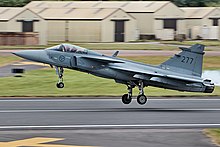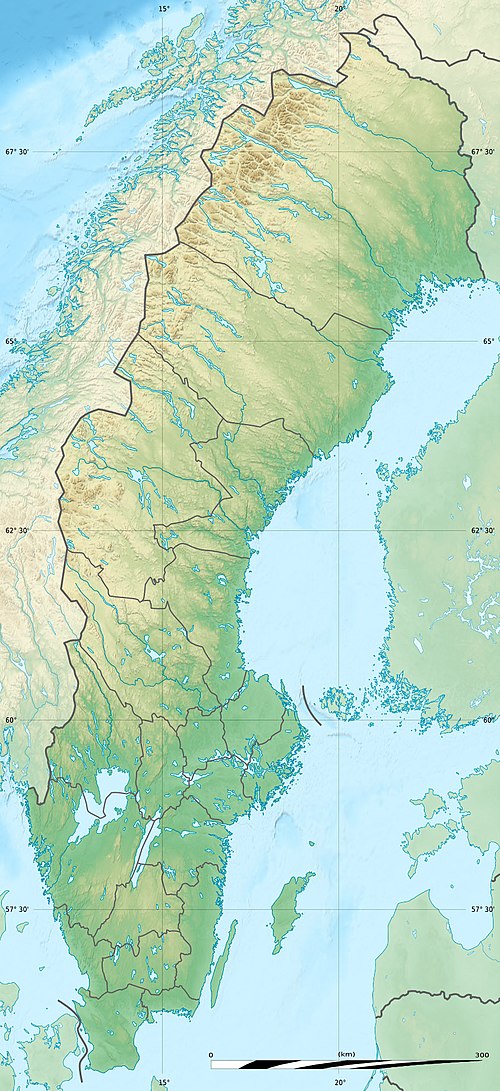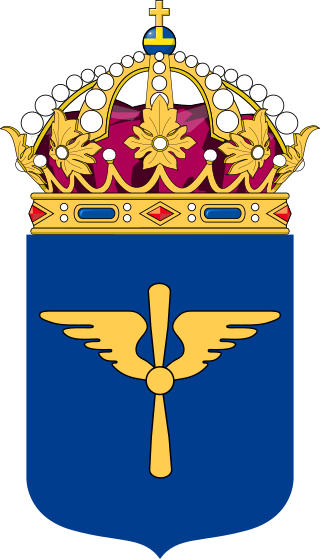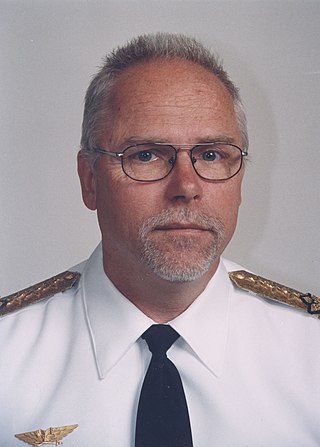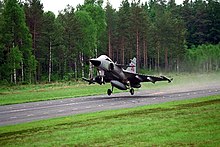
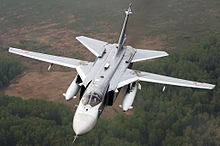
Bas 90 (Flygbassystem 90, Air Base System 90) was an air base system used by the Swedish Air Force during the Cold War. Bas 90 was developed during the 1970s and 1980s from the existing Bas 60 system in response to the new threats and needs that had arisen since the conception of the Bas 60 system during the 1950s. Like its predecessor, the Bas 90 system was based around defensive force dispersal of aircraft across many krigsflygbaser (wartime air bases) in case of war, as well as dispersion of the air base functions within the individual bases themselves. The air units would have been dispersed so one squadron (8-12 aircraft) would be stationed per krigsflygbas. The system was a protective measure against nuclear weapons and airstrikes, the purpose being to make it complicated for an opponent to destroy the Swedish Air Force on the ground and thus ensure endurance for the air force in a conflict scenario.
Contents
- Base layout
- Main runway
- Kortbanor - Short runways
- Flight line positions
- Operations
- Kommandocentral - Command Centre
- Bascentralen (BasC) - The Base Central
- TLF - The Traffic Leader At The Field
- Basbataljon 85 - Base battalion
- Today
- List of Bas 90 air bases
- References
- Notes
- Books
- Journals
- Web
- External links
The Six-Day War, where the Israeli Air Force destroyed most of the Egyptian Air Force on the ground during its opening stages in Operation Focus, served both as validation for the Swedish dispersion concept and as reason to develop the system further. Another reason to improve the system was the introduction of long range attack aircraft (primarily the Su-24) and cluster munitions and anti-runway bombs, which made air bases more vulnerable to conventional bombing. Bas 60 had primarily been designed around the threat of nuclear weapons.
The development of Bas 90 began in the 1970s and started being implemented in the 1980s. The main improvements in Bas 90 compared to Bas 60 was the addition of backup runways in direct vicinity to the main airfield, a more mobile groundcrew and improved communication technology.
The goal was to have a total of about 200 runways of different types available for military use across Sweden. This included bases that would not be upgraded to Bas 90 standard, road runways from the Bas 60 system and selected civilian airports. The air bases became organized into flygbasgrupper (air base groups). One air base group consisted of a main base (built or planned to be built to Bas 90 standard) and a number of alternative and reserve bases.
During peace time the air squadrons were stationed at their respective air wing and deployment to the wartime air bases would only occur when the threat level increased. But many of the air wings also doubled as wartime air bases and thus some air wings were also built to Bas 90 standard. The wartime air bases were only manned by a smaller bastropp (base troop) during peace time and the full base battalion would only be manned with a mobilization (except during certain exercises). This was because the majority of the units were made up by conscripts. The base system was therefore never fully active during the time it existed, like the rest of the Swedish Armed Forces during the Cold War and the immediate period after.

